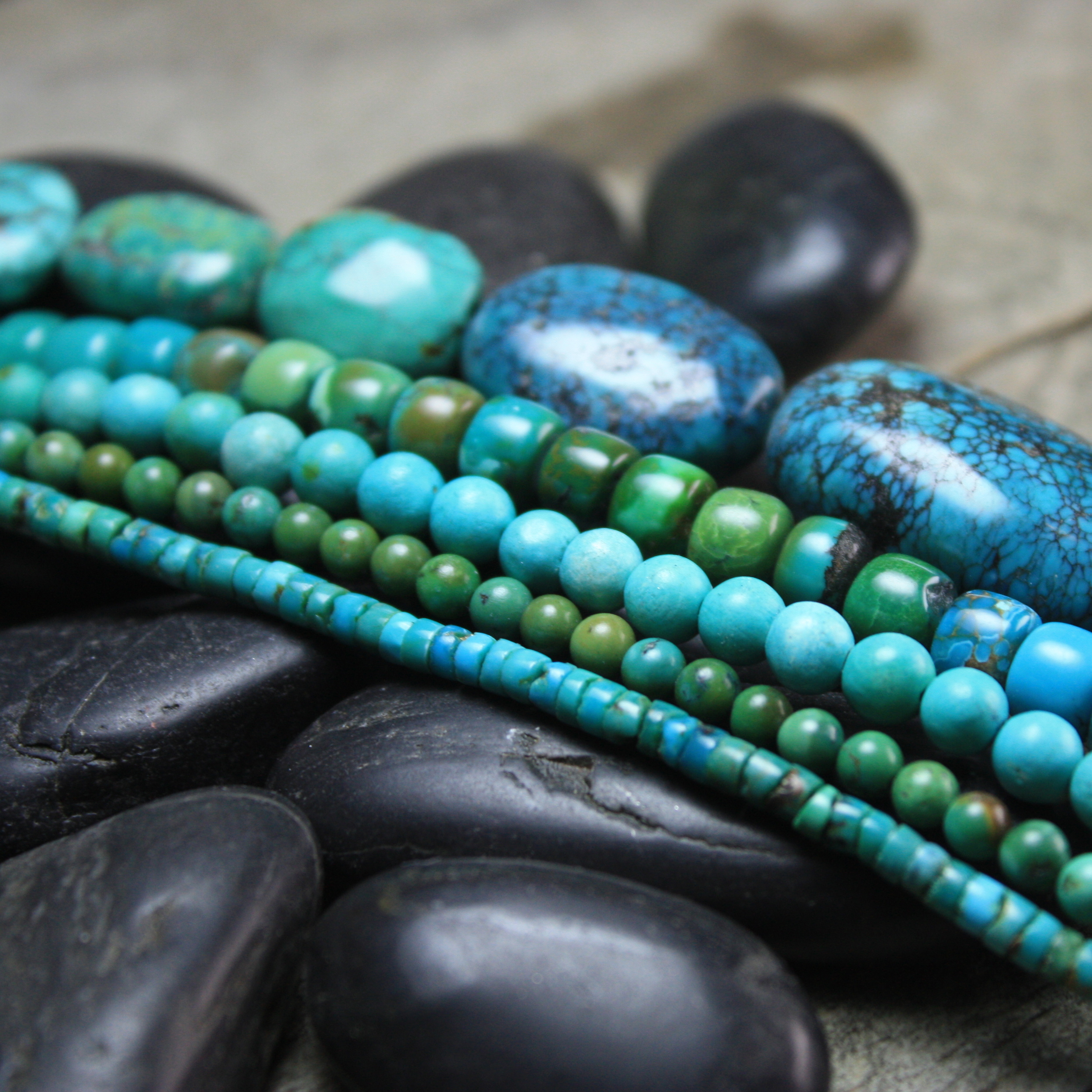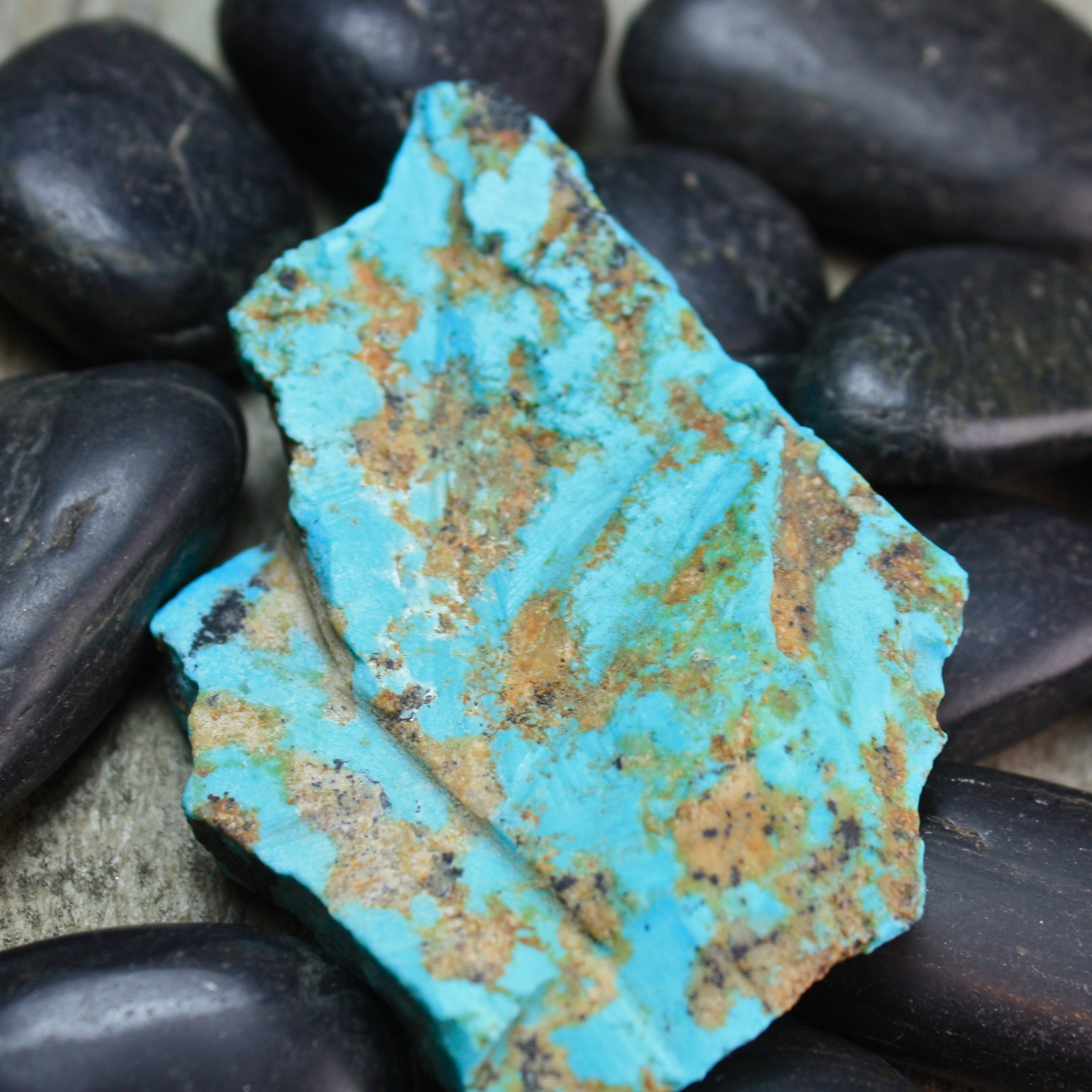The perenially beloved turquoise is a stone with many incarnations, from raw and rough to glossy, from nearly yellow-green right through to brightest blue. Like most stones, each type derives its color from its particular mix of elements. The primary stone is a hydrous phosphate of copper and aluminum, and is one of a group of copper-containing gemstones that includes malachite, azurite and chrysocolla. (It’s the oxidation of that copper that gives these stones their particularly vibrant shades, and is one reason these look so great when paired with copper.) It’s got a Mohs hardness of about 6, and is mined in Iran, the Sinai peninsula, China, Mexico and the US.
Metaphysical: One of December’s birthstones (the other is aquamarine). Turquoise is believed by many to be a “master stone” with many beneficial properties. Among its powers are to aid in interpersonal communication, with healing from chronic problems, aid with digestion, and even assist with mastering a fear of public speaking.
With so many variations, turquoise connoisseurs often have their particular favorite mines. Here’s some information on a few of ours:
Crow Springs lso known as AnnJax or Bluebird, is located near Tonopah, Nevada and 27 miles, as the crow flies, from the Royston turquoise mine. Crow Springs is known for its characteristic light green color contrasted with a bright red matrix which is made up of the host rock, rhyolite. The mine consists of several open pits. The largest pit measures about 50 feet long, 10 feet wide, and 15 feet deep. Materials that would yield gems of large size are scarce though the best stones have good color and are very hard. The mine includes a tunnel that digs 175 feet into the mountain; inside which a past owner Cordova discovered a bountiful deposit of commercial grade gold and silver.
The Pilot Mountain mine is located in western Nevada, east of the small town of Mina. As with most turquoise mines, this mine opened as a copper claim. Pilot Mountain turquoise was first mined around 1930 as a tunnel mine. Then it became an open pit mine when heavy equipment was available around 1970. While Pilot Mountain is considered an active mine, it is a very small operation. The miners go to the mine twice per year, bringing out only about 150 to 200 lbs. of rough stone each time. One of the current owners says one of the interesting parts of mining is “not knowing what you are going to hit next.” Pilot Mountain turquoise forms in thin seams, with some nugget formations. According to the current owner, the turquoise that has formed in thin seams is high grade with better, deeper blue-green colors. Most Pilot Mountain turquoise is called “grass roots,” meaning the best deposits are found within ten feet of the surface. Pilot Mountain turquoise is highly admired for its deep blue-green color variations. This stone also has very interesting matrix patterns, which range from red to brown to black, most notably a rich tobacco brown. Some of the matrix in high grade Pilot Mountain is beautiful spider web. Pilot Mountain turquoise is a hard stone that takes a good polish. Because of this hardness, this stone does not change colors with prolonged exposure to skin oils, etc. All of these characteristics make Pilot Mountain turquoise very collectible.
Royston Mine is one of a group of Nevada mines that produce a variety of beautiful stones, including beautiful medium blue to dark green turquoise with brown matrix, more delicate blue and green fade colors, and occasionally some emerald green stones.


